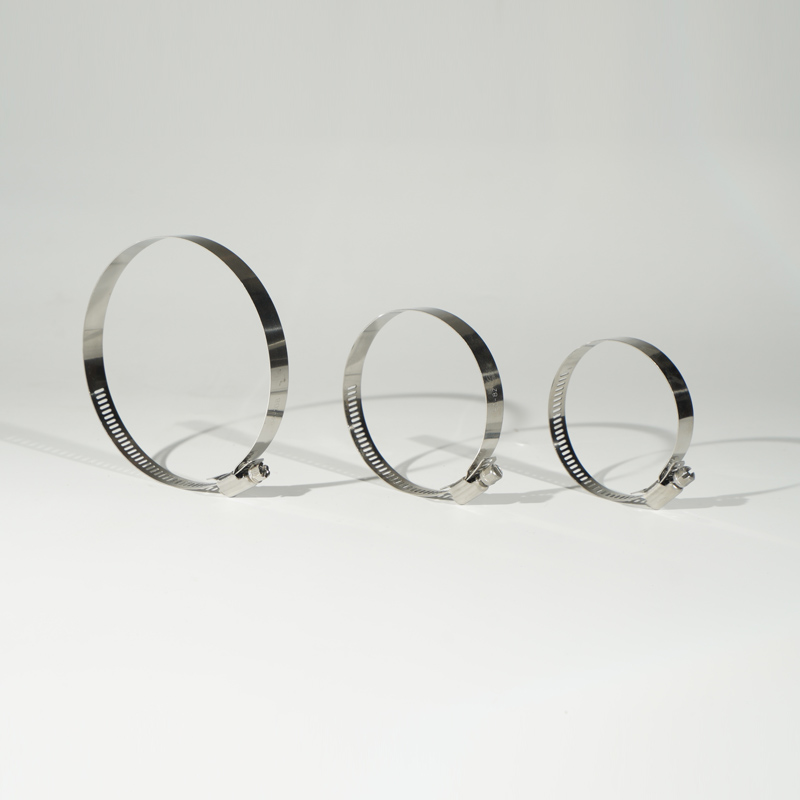- Phone:+86-17331948172 +86-0319-8862898
- E-mail: inquiry@puxingclamp.com
Aug . 12, 2024 21:06 Back to list
High-Performance 316 Stainless Steel Hose Clamps for Durable and Reliable Sealing Solutions
The Importance of 316 Stainless Steel Hose Clamps in Various Applications
When it comes to securing hoses in various applications, hose clamps play a crucial role. Among the numerous options available, 316 stainless steel hose clamps stand out due to their superior corrosion resistance and durability. This article explores the significance of 316 stainless steel hose clamps and their applications across different industries.
What are 316 Stainless Steel Hose Clamps?
Hose clamps are devices used to attach and seal hoses onto fittings, ensuring a tight fit to prevent leakage. The “316” designation refers to a specific grade of stainless steel that contains molybdenum, which enhances its resistance to corrosion, especially in marine environments or where chloride exposure is a concern. This makes 316 stainless steel hose clamps ideal for a variety of challenging settings.
Why Choose 316 Stainless Steel?
The primary advantage of 316 stainless steel hose clamps is their unparalleled resistance to rust and corrosion. Unlike other metals, 316 stainless steel can withstand harsh conditions, including saltwater, chemicals, and extreme temperatures. This property makes these hose clamps particularly valuable in marine applications, where traditional clamps may fail quickly.
Additionally, 316 stainless steel offers excellent strength and ductility, allowing clamps to endure the stress of high-pressure systems. They maintain their integrity under varying temperature fluctuations, ensuring a reliable and long-lasting seal for hoses in demanding environments.
Applications of 316 Stainless Steel Hose Clamps
316 hose clamps

1. Marine Industry Given their exceptional resistance to saltwater corrosion, 316 stainless steel hose clamps are widely used in boating and marine applications. They secure hoses for fuel lines, water systems, and exhaust systems on boats, preventing failures that could lead to leaks and safety hazards.
2. Chemical Processing In industries dealing with corrosive substances, the use of 316 stainless steel hose clamps is critical. They are used to secure hoses in chemical transfer applications, ensuring safe and reliable operation in environments where other materials would deteriorate.
3. Food and Beverage Industry The food and beverage industry demands high hygiene standards. 316 stainless steel is NSF-certified, making it safe for use in food processing applications. Hose clamps made from this material are employed in various plumbing and processing setups, ensuring that there is no contamination in food products.
4. Pharmaceuticals Similar to food processing, the pharmaceutical industry requires materials that can withstand stringent cleanliness standards. 316 stainless steel is the material of choice for securing hoses in drug manufacturing and processing, where even minor contamination can have severe consequences.
5. Automotive Applications In the automotive sector, 316 stainless steel hose clamps are used in areas subject to high pressure and heat, such as coolant and fuel lines. Their ability to maintain function in extreme conditions makes them a preferred choice for high-performance vehicles.
Conclusion
In conclusion, 316 stainless steel hose clamps offer essential benefits across a wide range of industries characterized by challenging environments and stringent safety requirements. Their corrosion resistance, strength, and durability make them indispensable in marine, chemical, food and beverage, pharmaceutical, and automotive applications. Investing in high-quality 316 stainless steel hose clamps ensures not only the longevity of the hoses and fittings they secure but also the overall safety and efficiency of the systems they are part of. For anyone involved in sectors that rely heavily on fluid transfer systems, integrating 316 stainless steel hose clamps into their operations is a wise and forward-thinking choice.
-
Large Stainless Steel Adjustable American Type Hose Clamp - Hebei Pux Alloy Technology Co., Ltd|Corrosion Resistance&High Breaking Torque
NewsJul.30,2025
-
Large Stainless Steel Adjustable American Type Hose Clamp - Hebei Pux Alloy Technology Co., Ltd
NewsJul.30,2025
-
Large Stainless Steel Adjustable American Type Hose Clamp - Hebei Pux Alloy Technology Co., Ltd|Corrosion Resistance&Industrial Applications
NewsJul.30,2025
-
Large Stainless Steel Adjustable American Type Hose Clamp-Hebei Pux Alloy Technology Co., Ltd|Corrosion Resistance, Adjustable Design
NewsJul.30,2025
-
Large Stainless Steel Adjustable American Type Hose Clamp - Hebei Pux Alloy Technology Co., Ltd. | High Breaking Torque & Corrosion Resistance
NewsJul.30,2025
-
Large Stainless Steel Adjustable American Type Hose Clamp - Hebei Pux Alloy Technology Co., Ltd
NewsJul.30,2025




